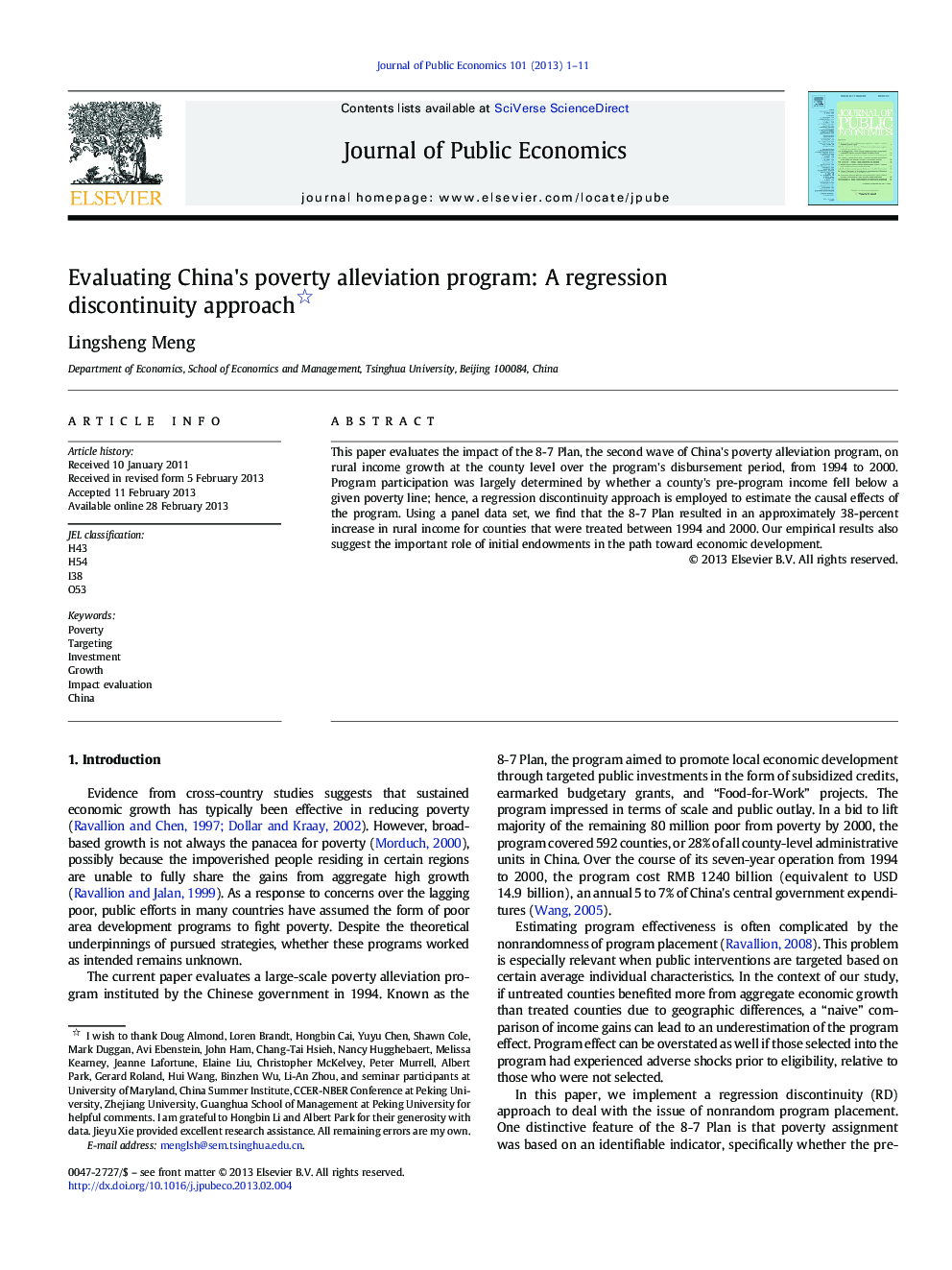| Article ID | Journal | Published Year | Pages | File Type |
|---|---|---|---|---|
| 969709 | Journal of Public Economics | 2013 | 11 Pages |
•This paper evaluates the impact of one of China's poverty alleviation programs.•A regression discontinuity approach is employed.•The program had a positive impact on rural income from 1994 to 2000.
This paper evaluates the impact of the 8-7 Plan, the second wave of China's poverty alleviation program, on rural income growth at the county level over the program's disbursement period, from 1994 to 2000. Program participation was largely determined by whether a county's pre-program income fell below a given poverty line; hence, a regression discontinuity approach is employed to estimate the causal effects of the program. Using a panel data set, we find that the 8-7 Plan resulted in an approximately 38-percent increase in rural income for counties that were treated between 1994 and 2000. Our empirical results also suggest the important role of initial endowments in the path toward economic development.
